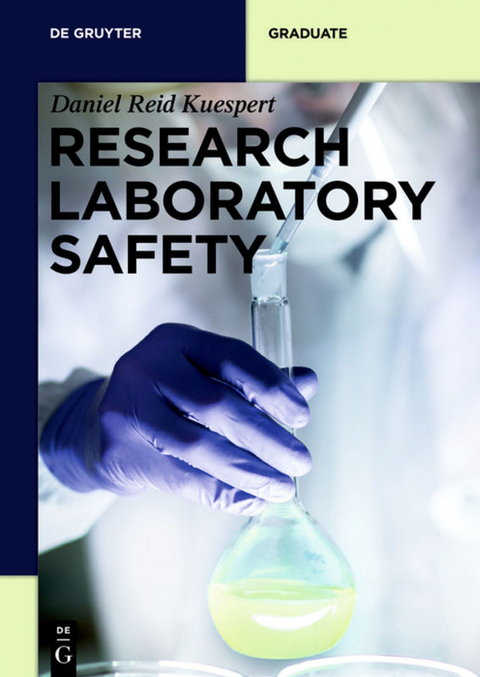Research Laboratory Safety
De Gruyter (Verlag)
978-3-11-044439-1 (ISBN)
Research Laboratory Safety explains the most important prerequisite when working in a laboratory: Knowing the potential hazards of equipment and the chemical materials to be employed. Students learn how to assess and control risks in a research laboratory and to identify a possible danger. An approach on the hazard classes such as physical, chemical, biological and radiation hazards is given and exercises to each class prepare for exams.
Daniel R. Kuespert, Johns Hopkins University, MD, USA
i. Preface/acknowledgements
ii. Notes to the instructor
Part 1: Introduction
I. Introduction
A. Accidents in the research laboratory
B. Factors contributing to laboratory accidents
C. Hazards in the laboratory
D. Ethical responsibilities
II. Assessing and controlling risk
A. Distinguishing hazard from risk
B. Risk as a composite of consequence and probability
C. Estimating risk (techniques for risk assessment)
D. Exercises: risk assessment
III. Hazard controls
A. The hazard control process
B. Classifying hazard controls
C. Creativity in hazard control
D. Exercises: hazard control
Part 2: Hazard classes and controls
IV. Hazard identification
A. Hazard identif ication methods
B. Brainstorming, mind-mapping, and other creative methods
C. Checklists
D. Reference books/standards/regulations
E. Exercises: hazard identification methods
V. Physical hazards
A. Mechanical hazards
B. Sharps
C. Heat
D. Cold
E. Pressure and vacuum
F. Electricity and magnetism
G. Ergonomics
H. General environment hazard
J. Exercises
VI. Chemical hazards
A. Reactivity: the root of all chemical hazards
B. The chemical fume hood
C. Corrosives
D. Flammables
E. Toxics
F. Reactive chemicals
G. Physical hazards from chemicals
H. Standard Operating Procedures for chemical handling
I. Case studies
J. Exercises
VII. Biological hazards
A. Lab-acquired infections and biotoxins
B. Assessment of biological infection risk
C. Biosafety levels
D. Waste disposal
E. The biological safety cabinet
F. Aerosol-free and other related work practices
G. Standard Operating Procedures for laboratory procedures
H. Case studies
I. Exercises
VIII.Radiation hazards
A. Ionizing radiation
B. Non-ionizing radiation (especially lasers)
C. Case studies
D. Exercises
Part 3: Hazard analysis with applications
IX. Hazard analysis techniques
A. The Checklist technique
B. Job Hazard Analysis (JHA)
C. The Structured What-If? Technique (SWIFT)
D. Advanced hazard and risk analysis techniques
X. Practical applications of hazard control
A. Controlling hazards in a laboratory procedure using JHA
B. Evaluating risks in an experimental apparatus using SWIFT
C. Deciding what hazard controls to implement
D. Designing an experiment from scratch
Appendices
A. Laboratory hazard identification checklist
B. Checklist reviews for common laboratory operations
C. Writing experimental protocols and Standard Operating Procedures
D. Annotated bibliography of laboratory safety information references
| Erscheinungsdatum | 26.10.2016 |
|---|---|
| Reihe/Serie | De Gruyter Textbook |
| Zusatzinfo | 69 b/w ill., 27 b/w tbl. |
| Verlagsort | Berlin/Boston |
| Sprache | englisch |
| Maße | 170 x 240 mm |
| Gewicht | 539 g |
| Themenwelt | Naturwissenschaften ► Chemie ► Physikalische Chemie |
| Technik | |
| Schlagworte | Chemieingenieurwesen • Forschung • Laboratorium • Risikoanalyse • Risikobewertung • Sicherheitstechnik |
| ISBN-10 | 3-11-044439-9 / 3110444399 |
| ISBN-13 | 978-3-11-044439-1 / 9783110444391 |
| Zustand | Neuware |
| Haben Sie eine Frage zum Produkt? |
aus dem Bereich




